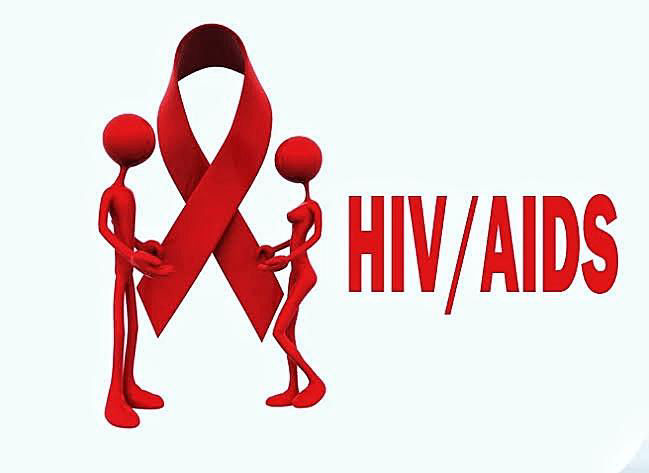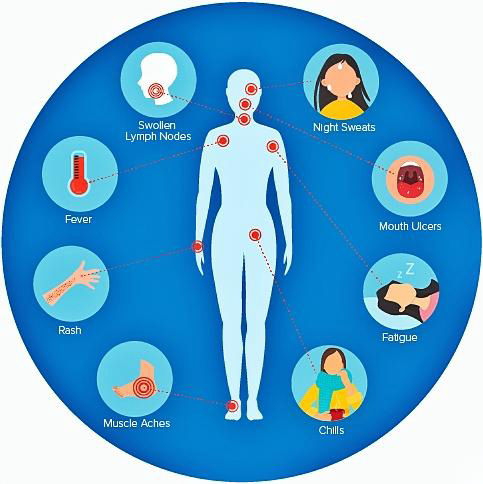A Donor Bill of Rights


Source: Independent News Nigeria. https://bit.ly/37Ht5KU.
What is HIV/AIDS?
HIV is an abbreviation that means Human Immunodeficiency Virus, while AIDS is an acronym that means Acquired Immunodeficiency Syndrome. HIV specifically refers to the virus which infects the body and damages the immune cells, thus making the person’s immune system become weaker (immunocompromised). AIDS is a severe disease complication that can arise in people infected with HIV, thus, one can refer to AIDS as the most advanced stage of the HIV infection. Note that not all people infected with HIV will develop AIDS.
How does HIV cause harm to the body?
Once the virus gets into the body, it starts to infect the immune cells, and it specifically targets certain cells known as CD4+ cells (T-Lymphocytes). These cells are a very vital part of the immune system, as they serve to alert all other immune cells in the body about an infection. Once these CD4+ cells are damaged by the virus, other immune cells will not be alerted and thus, the virus can go on causing harm in the body while remaining undetected for long periods of time. As this progresses for long, most immune cells in the body will get destroyed by the virus, causing the immune system to be weakened. A very weak immune system cannot fight off other subsequent infections, thus, even the simplest pathogens that gain entry into the body can cause severe illnesses. This highly weakened state of the immune system, coupled with the increased rate of infections, is what eventually gives rise to AIDS, and is the major cause of death in HIV/AIDS patients.
How is HIV transmitted?
The virus can be transmitted through certain body fluids like blood, seminal, vaginal and rectal fluids, as well as breast milk. The transmission can occur through any of the following processes:
- Through sexual intercourse like vaginal, anal or oral sex (rarely). This is the most common route of transmission.
- By sharing sharp objects that come in contact with blood, such as needles and syringes, as well as certain haircut equipment and tattoo instruments that are not properly sterilized between uses.
- Through open exposure to the body fluids of an infected person, which is not very common (more likely among healthcare professionals).
- From mother to child (perinatally) during pregnancy and delivery, as well as during breastfeeding.
- Through blood transfusions and organ transplants, which only happens when proper testing and screening is not done before the transfusion or transplant process.
Note that HIV cannot be spread through plain physical contact like handshakes, hugs, skin touch and so on. Also, it cannot be spread through air or water, or by contact with surfaces that an infected person has touched.

Source: CDC Website. https://bit.ly/37l6OMR.
What are the signs and symptoms of HIV?
The symptoms of HIV vary widely among individuals. During the first few weeks after a person gets infected, the virus reproduces very rapidly in the body, and over the next month, the infected person may experience some slight ‘flu-like’ symptoms, which may be overlooked and not suspected as symptoms of an HIV infection. Some of these symptoms include fever and chills, headache, nausea, sore throat, general malaise, stomach aches and sometimes, a skin rash that comes and goes. This is called the ‘acute infection stage’, which eventually resolves after a few weeks or months. However, during this period, the viral load in the person’s bloodstream and body fluids is very high and they can easily transmit the infection to others through any of the earlier mentioned routes of transmission.
After the first few months, the infection enters a second stage called the ‘clinical latency phase’, which can last for a number of years. During this stage, infected persons might not experience any symptoms or they may experience symptoms that are not specific to any disease. Some of these symptoms include joint aches, recurrent fevers, swollen lymph nodes, mouth ulcers, nausea and vomiting, worsened rashes, diarrhea and weight loss, pneumonia, shingles and recurrent oral or vaginal yeast infections. These symptoms may gradually or rapidly progress over time and if left untreated for long, may eventually give rise to AIDS. When the infection develops into AIDS, the immune system becomes completely weakened and the individual begins to experience a wide array of symptoms due to infections from various pathogens. At this point, it becomes difficult to manage the disease, the person will be constantly ill and eventually, death can occur.
How can HIV be diagnosed?
There are a number of tests that can be carried out to diagnose HIV, thus, advice from a healthcare provider is needed to determine which test is most suitable for a person. Antibody and Antigen tests check for signs of HIV antibodies and antigens in the bloodstream. These tests usually require blood samples or mouth swabs, which can be taken in the hospital or even done at home. These types of tests are the most commonly used and can produce results within 20 minutes to a few hours. The Nucleic Acid Test (NAT) is another method which is quite expensive but has a very high accuracy. This test screens for the virus itself and is mostly used for people with early symptoms of HIV. It takes about 5 to 21 days for the virus to be detected in the blood, thus, results are most accurate after this period of time.
How can HIV be treated?
So far, there is no cure for HIV and the disease remains throughout one’s lifetime. However, certain combination medications called ‘antiretroviral therapy’ are currently available, which can be used to manage HIV and allow the infected person to live a healthy lifestyle for many years. The drugs suppress the viral load, prevent the infection from progressing to AIDS, and reduce the chances of transmitting the infection to others. On the flip side, the medications have to be taken daily throughout a person’s life, because once the person stops taking them, the viral load will increase and the virus can start attacking immune cells again. If a person suspects that they have been recently infected with HIV, they can take certain drugs called ‘Post-exposure prophylaxis’(PEP), which can help clear out the virus and prevent it from reproducing rapidly, however, these drugs must be taken a maximum of 72 hours (3 days) after exposure to ensure effectiveness.
HIV positive individuals that regularly stick to their medications can greatly suppress the viral load to the point that they can have a healthy sex life without the risk of transmitting the virus to their partner. However, the partners of HIV positive persons can ensure extra safety by taking certain drugs called ‘Pre-exposure prophylaxis’ (PrEP), which prevent them from getting infected after sexual intercourse or other possible routes of transmission.
How does HIV affect a person’s lifestyle?
One of the major problems of living with HIV is the stigma attached to the disease, which can cause a lot of anxiety, depression and loss of self-esteem among infected persons. Despite the advances in treatment and awareness creation, a lot of people still discriminate against those infected with HIV, usually due to circulating myths and a lack of education about the disease. Another challenge of living with HIV is the need to constantly stick to a number of medications for years in order to suppress the viral load and live a healthy lifestyle. The constant intake of medications can produce some side effects such as headache, dizziness and nausea. Also, HIV positive individuals need to ensure extra hygienic practices and food safety in order to avoid exposure to a number of infectious pathogens that can cause opportunistic infections.
How can HIV be prevented?
No vaccine currently exists against HIV, though efforts are being made to develop one. One can help reduce the chances of infection via sexual intercourse by making use of condoms and other suitable barrier methods, or better still, avoid having multiple sexual partners. Also, precautions can be taken to avoid HIV infection through other routes by avoiding the multiple use and sharing of needles, syringes and other sharps, as well as ensuring adequate sterilization between uses. It is important to get tested for HIV in order for one to know their status. The use of pre- and post-exposure prophylaxis can also be employed by those that wish to prevent HIV infection before and after exposure to a transmission risk, such as having sex with a HIV positive individual.
References
Centers for Disease Control and Prevention (2020). About HIV. https://www.cdc.gov/hiv/basics/whatishiv.html.
Pietrangelo A (2020). A Comprehensive Guide to HIV and AIDS. Health Line. https://bit.ly/37GgSG7.
Leonard J (2020). What is it like to live with HIV? Medical News Today. https://bit.ly/38oKOpy.
Design a free site - Learn more